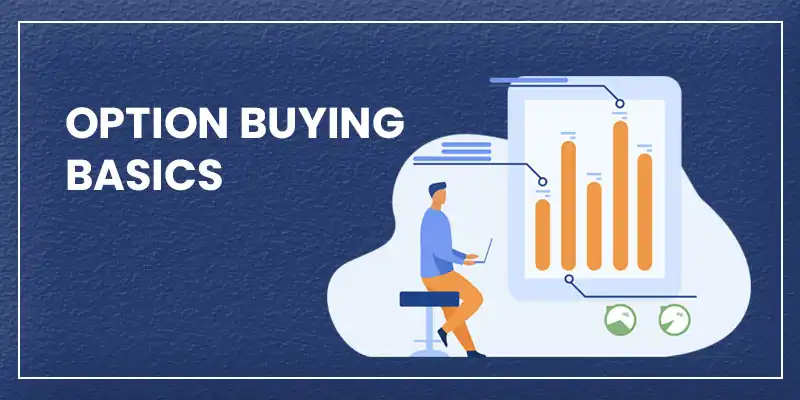Option buying involves acquiring a contract that gives the holder the right, but not the obligation, to buy or sell an asset at a predetermined price on or before an expiry date. This approach provides a way to participate in market movements with limited initial capital investment. This article presents an educational overview of option buying, including key definitions, functional elements, and relevant terminology used in this segment of the derivatives market.
Contents
- What Are Options?
- Key Terminology
- Mechanics of Option Buying
- Advantages and Considerations
- Strategic Considerations
- Conclusion
- FAQs
What Are Options?
Options are financial instruments categorized primarily into call options and put options. A call option confers the right to purchase an asset, whereas a put option grants the right to sell. Option buyers are not required to execute the contract. They pay a premium as compensation for the right attached to the option.
Read Also: Swaption: Hedging Fixed And Floating Interest Rate
Key Terminology
A firm grasp of basic terms is essential to understand option buying correctly. The premium is the cost paid to acquire the option. The strike price is the fixed price at which the underlying asset can be bought or sold. Expiry refers to the date when the option expires. Additionally, in-the-money, at-the-money, and out-of-the-money are concepts used to gauge the relationship between the strike price and the current market price.
Mechanics of Option Buying
When entering an option contract, buyers pay a premium, which is influenced by several factors: the underlying asset’s current price, time to expiry, and volatility. The premium is determined by pricing models considering these variables without suggesting a predetermined outcome. Should the market move favorably, the option buyer may exercise the option or sell it for potential profit.
From an educational standpoint, the process typically involves selecting a contract based on various criteria such as expiry and strike price, as part of understanding how options function in different market conditions. While buyers may benefit if the market moves favorably, outcomes depend on several variables, and no assurance of profit can be inferred. Once chosen, the premium is paid, and the position is monitored until expiry or liquidation. Participants need to understand that while the premium limits the maximum loss, fluctuations in market conditions can affect the strategy’s efficiency.
Advantages and Considerations
Option contracts allow for exposure to underlying assets with a defined upfront cost (premium). This aspect is sometimes cited in educational texts as offering capital efficiency. The defined cost in the form of the premium assists in setting clear boundaries on potential losses. Furthermore, options allow participants to speculate on price movements without needing to deploy a large amount of capital.
On the other hand, it is essential to underscore that the premium paid is non-refundable. The premium is lost if the market does not move in the expected direction. Time decay is another element; as the expiry approaches, the option’s value tends to decline, especially if the market price is not near the strike price. These factors highlight why it is essential to thoroughly analyze market conditions and understand the risk parameters associated with option buying.
It is important to note that premiums are non-refundable and that options may expire worthless if market conditions do not favor the contract terms.
Strategic Considerations
In educational discussions, participants are advised to study how predefined entry and exit points influence the interpretation of option price behavior under varied market conditions. A predefined plan for managing positions, including criteria for exercising the option or selling it before expiry, is essential. Learning how various market indicators interact with option prices helps determine whether to maintain or adjust a position.
Many traders also pay attention to liquidity and transaction costs that affect the premium and overall position. Increased liquidity contributes to more competitive pricing, while lower transaction costs may result in more efficient execution of trades. Any consideration of indicators or timing is presented here solely to understand structural behavior and not for investment decision-making.
Read Also: Understanding Implied Volatility: Meaning, Importance, and Calculation
Conclusion
Option buying is an essential component of the derivatives market, allowing individuals to benefit from price movements with a limited investment. Traders need to understand the definitions, mechanics, and associated terminologies clearly. A conceptual understanding of option buying helps participants explore how derivatives function within market environments. This article is intended to provide structural and functional clarity and does not imply outcomes or offer trading advice.
Disclaimer: Investment in the securities market is subject to market risks. Please read all scheme-related documents carefully before investing. The information provided in this article is for educational and informational purposes only and is not intended as investment advice. Trading in derivatives, including options, involves substantial risk and is not suitable for all investors. Past performance is not indicative of future results. Readers are advised to consult with their financial advisors before making any trading decisions.
FAQs
This difference lies in contractual rights vs obligations. Option buying grants a right without obligation, whereas selling involves obligations. The explanation is descriptive and not a recommendation.
Increased volatility tends to result in higher option premiums as it increases the probability of significant price movement, affecting the chance of options reaching profitability before expiry.
Option terms are fixed post-purchase. Traders may exit a position before expiry; however, this content does not endorse specific trading actions.

